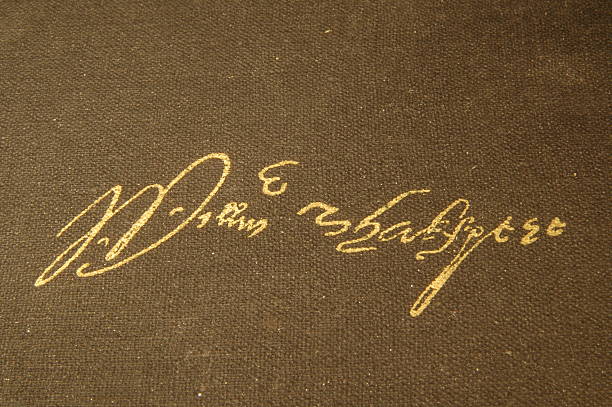In digital communication, manners aren’t just about etiquette.
They’re about presence , tone , and knowing when to speak — or stay silent.
From WhatsApp messages to Shopify product descriptions — from TikTok DMs to brand bios…
Politeness still matters.
And sometimes, the best way to show it… Is to borrow from history.
From Shakespeare’s quiet admiration to Jane Austen’s subtle wit — from Darcy’s restrained charm to Rhett Butler’s reluctant affection…
Classic literature offers more than romance.
It offers a blueprint for emotional intelligence in modern interaction .
In this guide, we’ll explore:
- Why emotional presence beats performance
- How to build soft warmth through timeless tone
- Real-world examples from dating apps to online retail
- And what psychology says about how people respond to depth
Let’s dive into Modern Manners Inspired by Classic Dialogues — and discover why sometimes, the strongest message isn’t clever…
It’s borrowed.
The Emotional Science Behind Timeless Tone: Why Presence Beats Push
We assume that boldness wins hearts — but research shows otherwise.
According to studies published in Social Psychological and Personality Science , users form stronger emotional bonds when messages feel emotionally aligned — not aggressive.
That means:
A flirty opener like
“You’re stunning.”
Might get noticed — but won’t last.
While a line like
“Your presence seems rare — wanted to keep things warm between us.”
Can replay in someone’s mind for days.
Because real chemistry builds best behind curiosity , not clarity.
And sometimes, the strongest move in digital interaction…
Is borrowing rhythm from time — and making it feel human again.
5 Ways Classic Literature Shapes Modern Messaging (Without Sounding Old)
Here’s how to flirt — or sell — with soft elegance.
1. Channel Mr. Darcy: Restraint That Feels Earned
Instead of saying: “I’ve been thinking about you all day.”
Try: “Your energy makes me rethink what connection feels like.”
One feels robotic.
The other invites curiosity.
Because in modern flirting and branding alike…
Tone beats urgency. Silence speaks before sound.
2. Channel Elizabeth Bennet: Witty Curiosity Over Boldness
Playfulness reduces pressure — and makes polite messaging feel less formal.
Try These:
“Are you always this interesting — or did you practice?”
Avoid sarcasm that feels sharp — keep it light.
Because real charm doesn’t shout.
It smiles through text.
3. Channel Atticus Finch: Thoughtful Words That Build Trust
If she mentions being thoughtful or guarded — respond with understanding.
Example: “No rush — just wanted to say hi again.”
“I appreciate how calm you seem — take your time.”
This shows emotional maturity — which is far more attractive than intensity.
4. Channel Hamlet: Depth Without Drama
Even if you’re building real rapport — avoid diving into romantic expectations early.
Save them for later — once trust builds.
Because real emotional depth begins with lightness — not weight.
5. Channel Rumi: Warmth That Lasts Beyond the Moment
People navigating multiple conversations often respond better to light, steady energy — not dramatic declarations.
Avoid lines like: “What are you really looking for?”
Stick to: “Your presence makes me rethink what chemistry feels like.”
“I think my phone cracked when I saw your picture. Worth it.”
One creates pressure.
The other builds presence.
And that’s exactly what modern shoppers — and matchmakers — crave.
Real-Life Examples: When Literary Energy Sparked Something Real
Let’s look at real cases where classic rhythm won over loud charm.
The Match Who Said Less — and Got More Appreciation
He sent:
“Your bio made me curious — wanted to say hi back.”
She replied instantly:
“Now I’m wondering what caught your attention…”
💡 Why It Worked: He led with respect — not pressure.
His message felt warm, not forced — and she responded because of it.
The DM That Felt Like a Gentle Knock
She messaged him with:
“I admire how calm you carry yourself — wanted to keep things warm between us.”
He replied: Sent a voice note — no delay.
She said:
“That made me smile longer than intended — even though it’s gone now.”
💡 Why It Mattered: He matched her rhythm — and gave space for emotion to build.
Because real chemistry forms best when silence is part of the conversation.
The Brand That Built Trust Through Thoughtful Language
A DTC skincare store changed its email footer to include:
“Still smiling from our last drop — wanted to ask, ‘What should we try next?’”
Result?
- Higher reply rate
- Warmer interactions
- Repeat buyers who felt heard
Lesson Learned: They didn’t just sell — they invited presence.
Which made all the difference.
How to Build Messages That Land With Emotional Intelligence
Want your words to build trust — not tension?
Here’s how to craft polite, emotionally intelligent messages that stick — both online and off.
1. Lead With Lightness
Instead of aggressive CTAs like: “Buy now — only 3 left!”
Try: “Still smiling from our last chat — wanted to share something rare.”
One feels robotic.
The other invites curiosity.
Because in digital commerce…
Tone beats urgency. Presence beats performance.
2. Use Humor That Disarms Tension
Playfulness reduces stress — and makes transparency feel less formal.
Good Examples:
“I wasn’t going to flirt today… but clearly, I failed.”
Avoid sarcasm that feels sharp — keep it light, not lazy.
Because real charm doesn’t need edge to land well.
3. Acknowledge Viewer Boundaries Before Testing Them
Some people need space to process. Others thrive on directness.
So instead of chasing, try pausing.
Try These:
“Now I’m going to give you space — but wanted to keep things warm.”
“I appreciate how easy it is to talk to you — take your time.”
This shows control — and builds comfort.
4. Don’t Force Deeper Topics Too Soon
Even if you’re building real rapport — avoid diving into deep topics too soon.
Save them for later — once trust builds.
Because real emotional depth begins with lightness — not weight.
5. Keep Tone Warm — Not Overly Formal
People navigating multiple conversations often respond better to light, steady energy — not dramatic declarations.
Avoid lines like: “You should be with me instead.”
“I want more than this.”
Stick to: “Your presence makes me rethink what chemistry feels like.”
“I hope this doesn’t ruin our vibe — but I genuinely enjoy talking to you.”
One creates pressure.
The other builds presence.
Frequently Asked Questions (FAQ)
Q: Do women notice subtle flirty messages?
A: Absolutely — especially when they match her energy and avoid pressure.
Q: Should I use AI to write my openers?
A: Only if you personalize them afterward — AI can suggest, but only you can match emotion.
Q: What if she ignores my message?
A: Don’t panic — give her time. Silence doesn’t always mean disinterest.
Q: Can I flirt without sounding desperate?
A: Definitely — focus on warmth over urgency.
Q: Is it okay to mention that I noticed her energy?
A: Yes — and often preferred over appearance-based comments.
Final Thoughts
Flirting has never been about volume — it’s always been about presence .
And now, thanks to the power of digital communication…
The best messages aren’t shouted — they’re spoken like literature.
So next time you send a message…
Don’t just ask:
“Did she read it?”
Ask:
“Did it make her pause — or push her away?”
Because the most attractive thing you can do…
Isn’t always a flirty line.
It’s a sentence that makes someone feel safe enough to reply — even when they weren’t expecting it.
And sometimes, that’s all it takes to turn quiet admiration into real connection.





